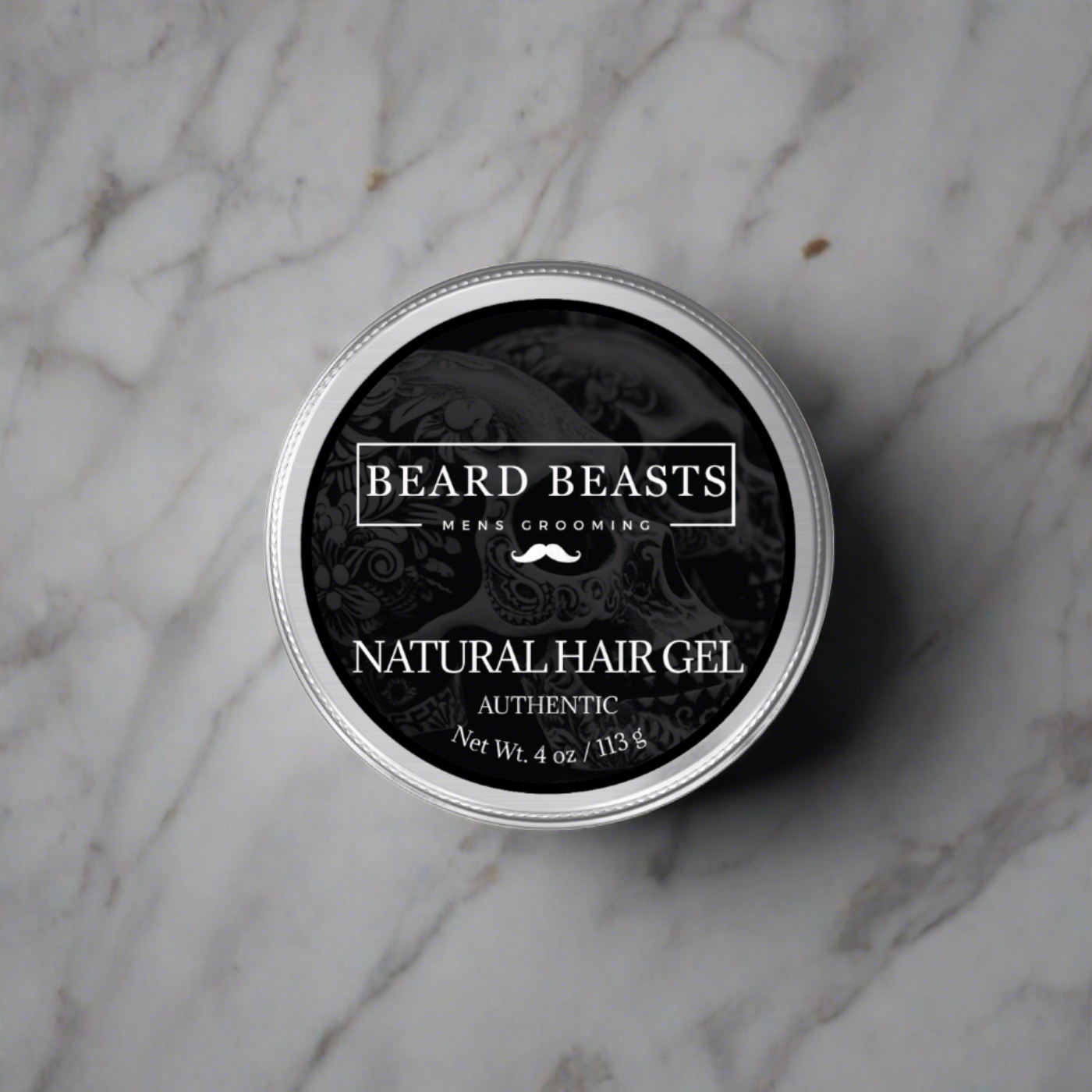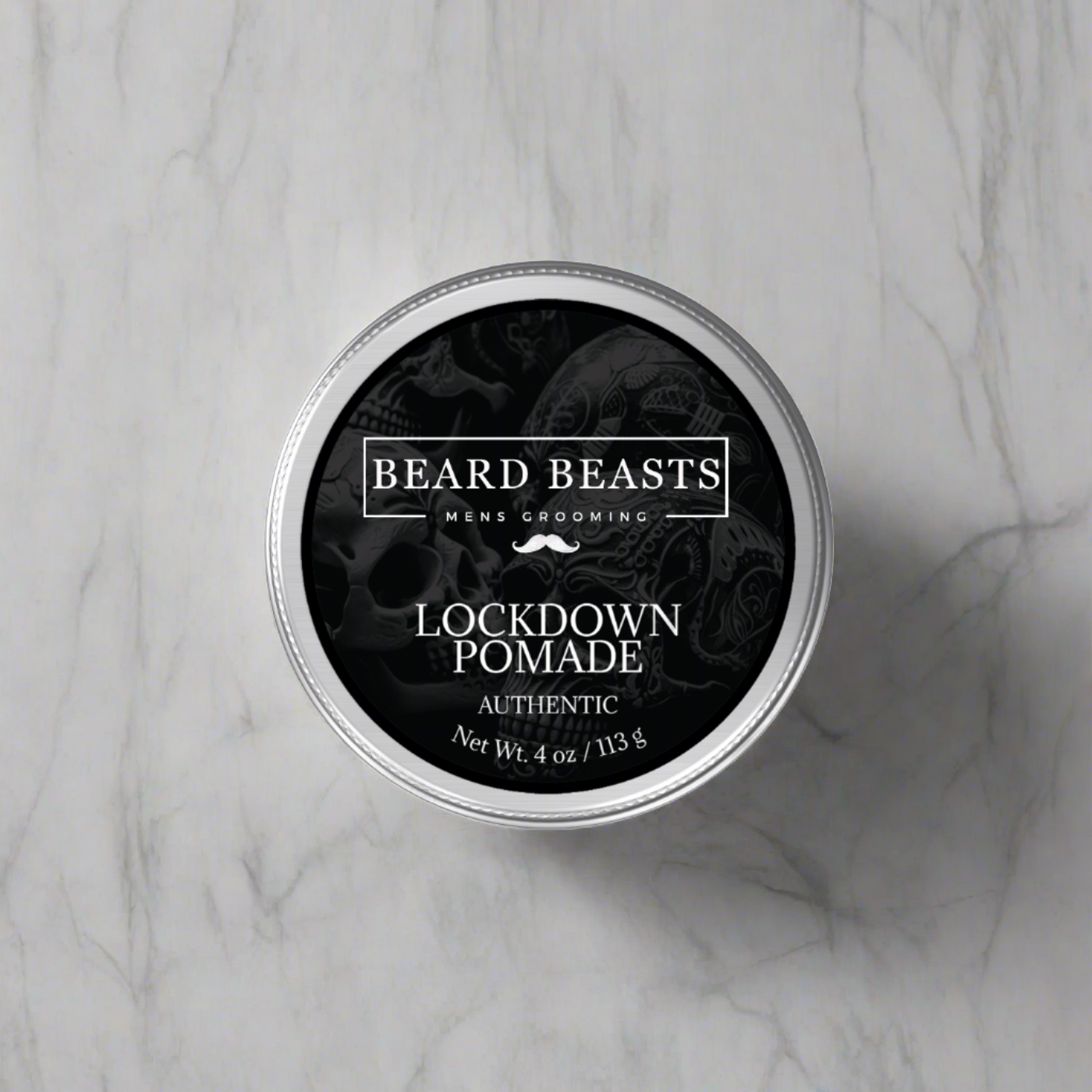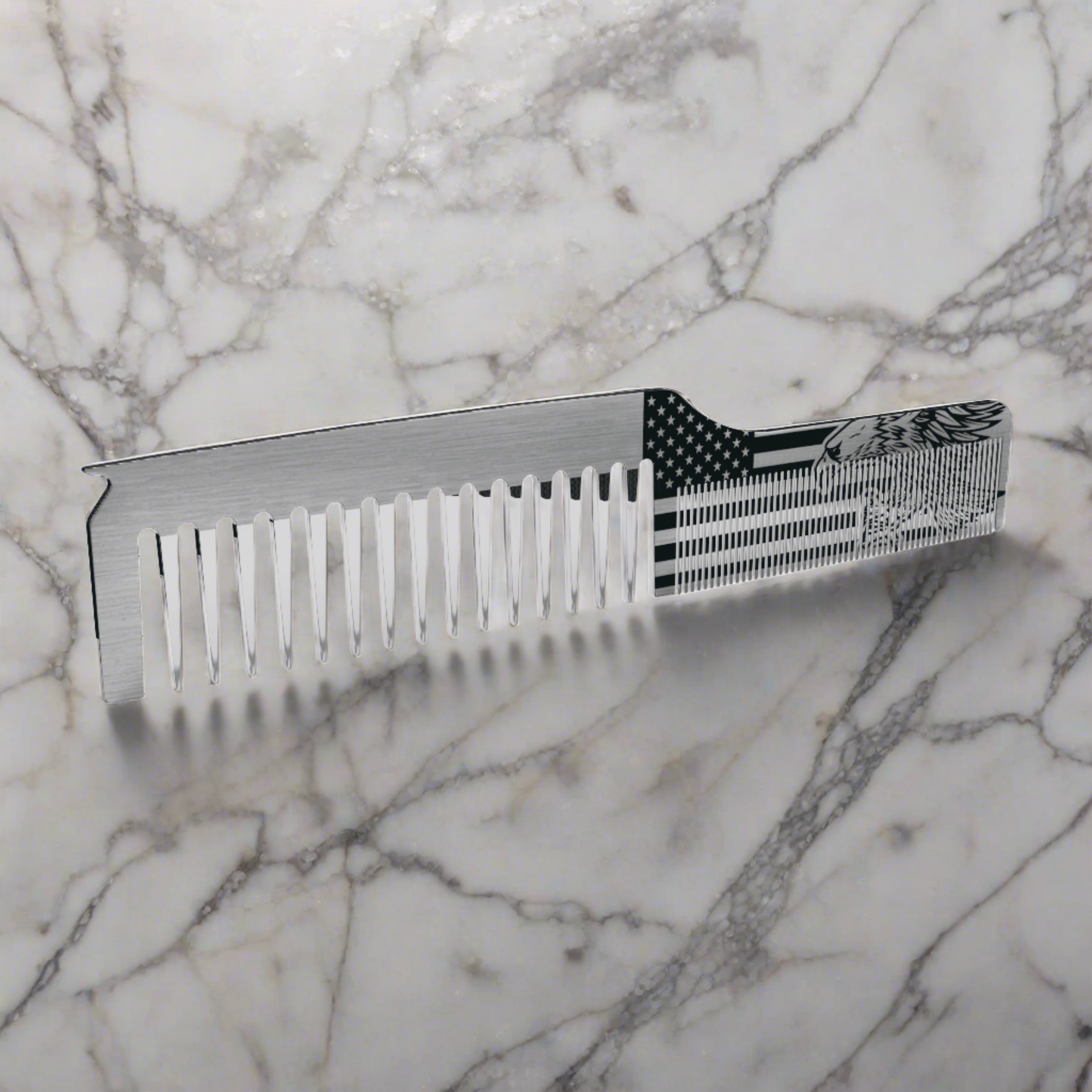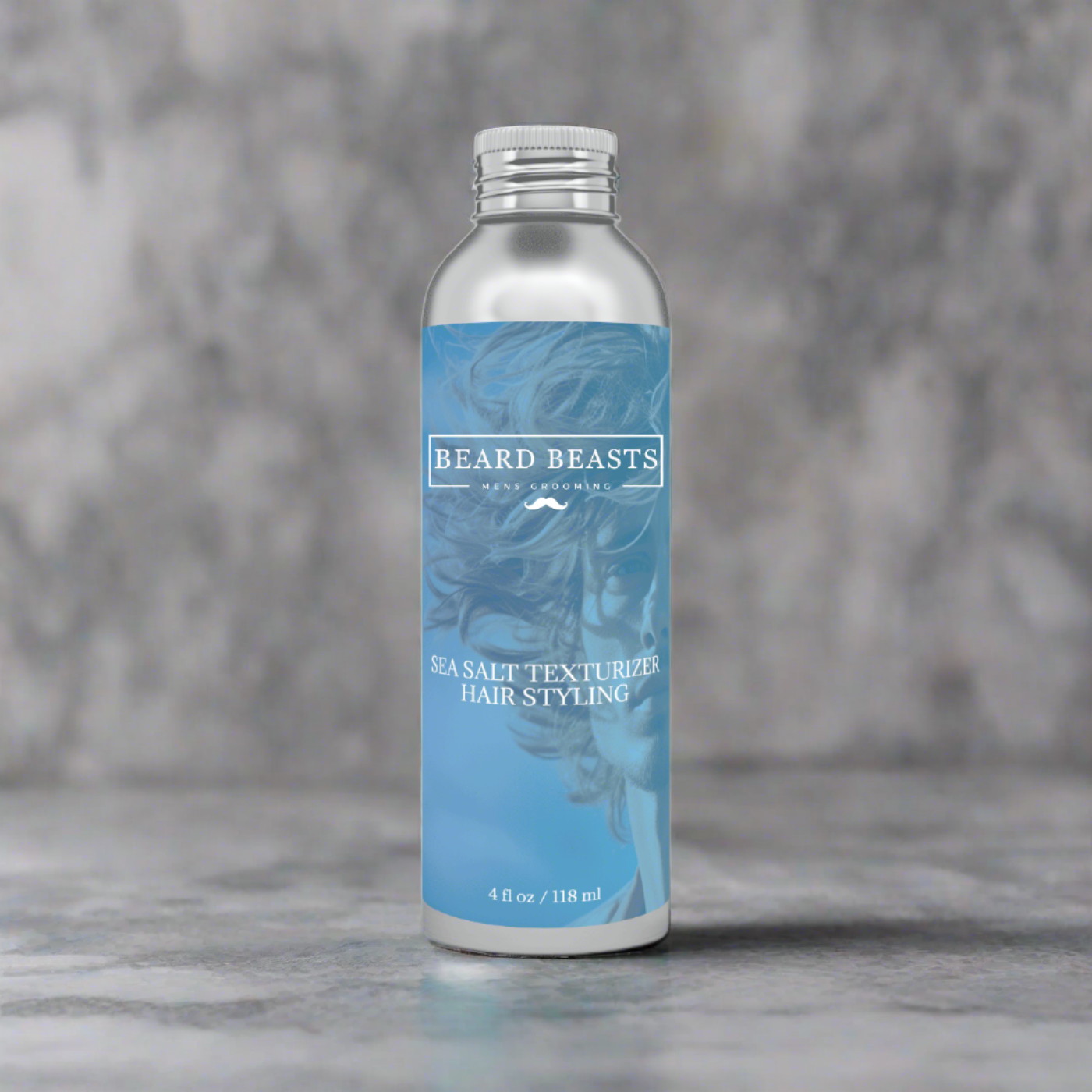Undercut vs Fade: Understanding the Key Differences
When it comes to choosing a haircut, it's like standing at a crossroads with endless paths. Two paths, however, have gained remarkable attention in the fashion world: the undercut and the fade. These two styles, each with its unique appeal and character, have dominated the hairstyling scene, often leaving style enthusiasts pondering over "undercut vs fade" - which to choose?
Your haircut is more than just a fashion statement; it's a reflection of your personality and style. The right haircut can be a game-changer, boosting your confidence and accentuating your best features. It's a vital part of your personal brand. That's why understanding the nuances of popular haircuts, especially when debating between an undercut vs fade, is crucial.
At first glance, the undercut and fade might seem to tread similar territory, but they're distinct in their essence. The undercut is all about stark contrasts - long hair on top combined with shorter, often buzzed sides. It's a style that speaks of boldness and edge. The fade, meanwhile, is characterized by its seamless gradient, with hair length gradually decreasing down the sides and back. It's more about subtlety and smooth transitions.
In the upcoming sections, we're going to explore these two popular hairstyles in detail. We'll unravel the differences and nuances of the undercut vs fade, helping you to not just understand them but also to figure out which style resonates more with your personal look. So, let’s get ready to dive deep into the world of modern hairstyling and discover your next favorite haircut!

Hair Gel
$11.99

Lockdown Pomade
$14.99

Stainless Hair Comb
$24.98

Texturizing Spray
$17.99
What is an Undercut?
When we talk about an undercut, we're diving into a style that's as classic as a leather jacket and as bold as a rock anthem. Picture this: the hair on the top of your head is left long, while the sides and back are trimmed short - really short. It's like the mullet's cooler cousin, but don't let that comparison scare you off! The undercut has evolved far beyond its punk rock roots.
A Brief Stroll Through Undercut History
Believe it or not, the undercut isn't a modern invention. It first turned heads in the early 20th century, often seen on the streets of Edwardian Britain. Fast forward to the 1920s and 1930s, and it became a staple among working-class men for its practicality. Then, as it often happens in the world of style, what's old became new again. The undercut resurfaced in the rebellious rock scenes of the 1980s and 90s, and today, it's synonymous with edgy, contemporary coolness.
The Hallmarks of the Undercut
The key to an undercut's charm lies in its contrast. The dramatic shift from long to short hair isn't just eye-catching; it's a statement. This style suits those who want to stand out in a crowd, giving off an aura of confidence and style-awareness. And here's the best part: despite the "undercut vs fade" debate, an undercut can be incredibly versatile. Wear it slicked back for a classic look, tousled for a casual vibe, or styled up for a more avant-garde appearance.
Popular Undercut Styles: From Classic to Contemporary
Undercuts come in all shapes and sizes, and there's bound to be one that fits your style. The classic undercut keeps it simple - long on top, short on the sides, no fuss. Looking for something trendier? Try the disconnected undercut, where the contrast between the top and sides is even more pronounced. For those who like a little more flair, the pompadour undercut - think Elvis Presley but cooler - can be your style of choice. And let's not forget the side-swept undercut, perfect for a modern, sleek look.
In the grand scheme of the undercut vs fade, the undercut stands out for its boldness and adaptability. Whether you're aiming for a look that's subtly stylish or one that screams 'look at me', there's an undercut that can make that statement for you.
What is a Fade?
Now, let's shift gears from the bold world of the undercut to the sleek, sophisticated realm of the fade. Imagine a haircut where the hair gradually 'fades' from longer to shorter, almost seamlessly blending into your skin. That's the essence of a fade - a style that's less about contrast and more about a smooth transition. It's the kind of haircut that requires a keen eye and a steady hand from your barber, making it a masterpiece of hairstyling.
The Fade's Journey Through Time
The fade has an interesting backstory. It originated within the U.S. military in the 1940s and 50s, favored for its clean, neat look that complied with strict grooming standards. From these disciplined roots, the fade spread to civilian life, becoming a cornerstone of style in African American communities in the 60s and 70s. Fast forward to today, and the fade has conquered the world, adored for its versatility and its clean, modern aesthetic.
Fade Fundamentals: What Makes a Fade a Fade
The fade is all about gradients. It's a haircut that can be as subtle or as dramatic as you like. The key characteristic of a fade is the gradual shortening of hair length from the top of the head down to the natural hairline. Unlike the undercut, there's no abrupt change in hair length. Instead, it offers a smooth, gradient effect that can be tailored to suit your style and facial shape. It's a look that says 'effortlessly cool' without trying too hard.
Exploring the World of Fade Haircuts
Fades aren't a one-size-fits-all deal. There's a variety to choose from, each with its own personality. The classic fade keeps things relatively conservative, perfect for a professional setting. Want to dial it up a notch? The high fade starts higher up on the head, making a bolder statement. For those who prefer subtlety, the low fade offers a gentle transition. And then there's the mid fade, striking a balance between noticeable and understated. Not to mention, specialty fades like the temp fade or the taper fade, each adding a unique twist to the classic style.
In the conversation of undercut vs fade, the fade is like the smooth-talking, well-dressed character who makes a statement without raising their voice. It's a style that offers a range of expressions, from the boldly dramatic to the elegantly understated, making it a go-to for anyone looking to add a touch of class to their look.

Hair Gel
$11.99

Lockdown Pomade
$14.99

Stainless Hair Comb
$24.98

Texturizing Spray
$17.99
Undercut vs Fade - The Main Differences
In the world of haircuts, the debate of "undercut vs fade" often centers on their distinct approaches to length and texture. The undercut is like a bold statement piece in your wardrobe – it's all about the contrast. It keeps the hair on top long and full, offering a canvas for various styles, while the sides are cut short and sharp. This contrast creates a striking texture difference that's unmistakable.
The fade, on the other hand, is the master of subtlety. It works in gradients, with the hair length seamlessly tapering from longer at the top to shorter at the bottom. This gradual transition gives the fade its signature smooth texture. There's no stark contrast here; instead, it's all about blending and finesse.
Styling and Upkeep: What to Expect
When it comes to styling and maintenance, both the undercut and fade have their quirks. The undercut, while versatile, often requires a bit more effort in styling. Whether you’re slicking it back or leaving it tousled, it demands some attention and product to keep the longer hair on top in check. As for maintenance, regular trims are needed to keep the sides short and the distinction clear.
The fade is a bit more low-maintenance on the styling front. Once cut, it often requires minimal styling, especially if you're going for a natural look. But, here's the catch – to keep that perfect gradient, you'll need frequent visits to the barber. The fade can lose its sharpness as your hair grows, so staying on top of those trims is key.
Matching Styles to Your Unique Look
Choosing between an undercut and a fade isn't just about style preference; it's also about what works best for your face shape and hair type. The undercut, with its volume on top, can be great for elongating rounder face shapes. It also works well with thicker hair types that can handle and hold the longer length on top.
Fades, in contrast, are incredibly versatile and can suit almost any face shape. They are particularly flattering for those with sharper features, as they help soften the overall look. Fades are also a favorite for those with finer hair, as the style doesn't rely on volume but rather on the skillful graduation of lengths.
In the "undercut vs fade" debate, it’s not just about picking a side. It's about understanding how each style can complement your individual features and lifestyle. Whether you lean towards the boldness of an undercut or the seamless sophistication of a fade, both styles offer a way to express your personal taste and character.
Choosing the Right Style for You
Deciding between an undercut and a fade isn't just about jumping on the latest trend. It's about what fits into your world. Let's break it down.
Lifestyle Matters: Your haircut is an extension of your lifestyle. If you're someone with a busy schedule and minimal time for styling, a fade might be your go-to. It's sleek, easy to manage, and doesn't demand a lot of your morning routine. On the other hand, if you love spending time styling your hair and experimenting with different looks, the undercut offers that creative space.
Hair Type and Texture: Thick, curly, straight, fine – your hair type plays a crucial role in this decision. Undercuts work well with most hair types, especially if you're blessed with a thicker mane. The length on top of an undercut can showcase your hair’s natural texture. Fades, however, are particularly forgiving for those with thinner hair. The gradual shortening can give a fuller appearance to your hair.
Face Shape Considerations: The shape of your face can guide you towards the most flattering haircut. Undercuts tend to suit rounder face shapes as they add height and create an illusion of length. Fades, with their varied styles (low, mid, high), can be customized to enhance any face shape, from square to oval to heart-shaped.
The Role of a Professional Stylist
This is where a good stylist comes into play. They're not just there to run clippers through your hair; they're your style consultants. When you're stuck in the "undercut vs fade" conundrum, a skilled stylist can provide personalized advice based on your hair type, face shape, and lifestyle. They can also show you how to style your new cut and recommend the right products.
Adapting to Your Personal Preference
Remember, at the end of the day, your haircut is about you. It's a form of self-expression. Whether you choose an undercut or a fade, it should make you feel confident and comfortable. Don't be afraid to ask your stylist to tweak these styles to suit your personal taste. Maybe you want an undercut but with a softer contrast, or a fade that's not too dramatic – it's all about making the style your own.
In the world of "undercut vs fade," there's no one-size-fits-all. It's about matching your haircut to your personal story – who you are and how you live your life. With the right information and a good stylist, you can find that perfect style that feels like it was made just for you.

Hair Gel
$11.99

Lockdown Pomade
$14.99

Stainless Hair Comb
$24.98

Texturizing Spray
$17.99
Maintenance and Care
Whether you've decided on an undercut or a fade, keeping your haircut looking its best is key. Let's dive into some essential maintenance tips for both styles and recommend some products that will keep your hair game strong.
Tips for Maintaining an Undercut
-
Regular Trimming: The key to a sharp undercut is keeping those sides neat. Schedule regular trims every 3-4 weeks to maintain the contrast that gives the undercut its signature look.
-
Styling the Top: The longer hair on top of an undercut offers room for creativity. Use a good quality pomade, wax, or clay to style it. These products give hold and texture without making your hair look greasy.
-
Wash and Condition: Keep the longer hair on top healthy by using a nourishing shampoo and conditioner. It's all about balancing cleanliness with maintaining natural hair oils.
-
Blow-Drying: If you're styling the top, a blow dryer can be your best friend. It can add volume and help in getting that perfect, styled look. Remember to use a heat protectant spray to guard against heat damage.
Tips for Maintaining a Fade
-
Frequent Barber Visits: A fade requires upkeep to keep it looking sharp. Plan on visiting your barber every 2-3 weeks to keep the fade precise.
-
Keep It Clean: Short hair tends to get oily faster. Use a gentle, daily-use shampoo to keep your hair and scalp clean without over-drying.
-
Moisturize Your Scalp: Especially if you have a skin fade, it's essential to keep your scalp moisturized. A light, non-greasy moisturizer will keep your skin healthy.
-
Minimal Styling Needed: One of the joys of a fade is that it requires minimal styling. But if you want to add some texture, a small amount of light-hold product can do the trick.
Recommended Hair Care Products
-
Styling Products: For undercuts, look for matte-finish pomades or texturizing clays. For fades, a light-hold gel or mousse can be enough.
-
Shampoos and Conditioners: Opt for sulfate-free shampoos that gently cleanse without stripping away natural oils. Look for conditioners that are hydrating but not heavy.
-
Scalp Care: Consider products like scalp oils or moisturizers, especially if you have a close fade or deal with dry skin.
Remember, whether you've chosen an undercut or a fade, the key to great-looking hair is regular maintenance and using products that suit your hair type. With these tips, your "undercut vs fade" decision will not only define your style but also ensure your hair stays healthy and vibrant.

Hair Gel
$11.99

Lockdown Pomade
$14.99

Stainless Hair Comb
$24.98

Texturizing Spray
$17.99
Your Top Questions on Undercut vs Fade, Answered
Navigating the world of haircuts can be tricky, especially when you're weighing options like an undercut vs fade. Let's tackle some of the most common questions to help you make the best choice for your style.
What is more versatile: undercut or fade?
When it comes to versatility, both the undercut and fade have their merits. The undercut stands out for its dramatic look and the ability to style the top hair in various ways – slicked back, parted, or even in a bun. It's a statement style that can adapt to both casual and formal settings.
The fade, meanwhile, is subtly sophisticated. It blends seamlessly with different lengths and styles on top, making it a great all-rounder for any occasion. So, if you love experimenting with different top styles, the undercut might be your pick. But, if you prefer a universally adaptable look, go for a fade.
Can undercuts and fades work with all hair types?
Absolutely! One of the great things about both undercuts and fades is their compatibility with various hair types. Undercuts work well with thick and medium hair, giving you enough volume on top to play around with different styles. Even those with fine hair can rock an undercut, though they might need more styling products to maintain volume.
Fades are incredibly versatile and are particularly beneficial for those with finer hair, as the gradual shortening can create an illusion of thickness. Both styles can be tailored to suit curly, straight, or wavy hair, so there's something for everyone in the "undercut vs fade" debate.
How often should I trim my undercut or fade to maintain the style?
To keep your undercut in top form, you should plan on getting a trim every 3 to 4 weeks. This frequency keeps the sides and back sharp and clean, maintaining the contrast that defines the undercut. For fades, the maintenance is a bit more frequent.
A fade can start losing its crispness in as little as 2 to 3 weeks, so regular barber visits are crucial to keep that gradient looking fresh. Of course, how fast your hair grows and how precise you like your haircut can also influence how often you need a trim.
Remember, whether you choose an undercut or a fade, both styles are about expressing your personality and fitting into your lifestyle. So, go with what feels right for you, and don't be afraid to experiment!

Concluding The Undercut vs Fade Argument
As we wrap up our journey through the distinctive worlds of the undercut and fade, let's take a moment to reflect on what we've uncovered. The undercut, with its sharp contrast between long top and short sides, is a bold statement of style and individuality. It's for those who love a bit of drama and flair in their look. On the other side, the fade is the epitome of smooth sophistication, offering a seamless transition from hair to skin. It's perfect for anyone seeking a clean, polished appearance that's as versatile as it is stylish.
Dare to Experiment
Remember, the beauty of haircuts like the undercut and fade lies in their ability to be adapted and personalized. Don't shy away from experimenting with these styles. Maybe blend elements of both to create something uniquely yours. Your hair is a canvas, and these haircuts are tools to express your personality. Embrace the opportunity to experiment and find the look that resonates with you.
Your Style, Your Choice
Whether you lean towards the dramatic edge of an undercut or the subtle elegance of a fade, the most important thing is that your choice reflects who you are. Consult with your stylist, consider your lifestyle, hair type, and face shape, and most importantly, have fun with it. In the "undercut vs fade" decision, there's no right or wrong choice – only what works best for you.
So, step out with confidence, whether it's with a bold undercut or a sleek fade, and let your haircut be a reflection of your unique style and personality. After all, the best style is one that makes you feel great!
Follow Beard Beasts on Social Media:
Instagram – @beardbeastsofficial
Facebook – @beardbeastsofficial
Pinterest – @beardbeasts
Interesting Reads:
Win The Morning With This 30 Minute Morning Routine For Men
How To Become More Physically Attractive













